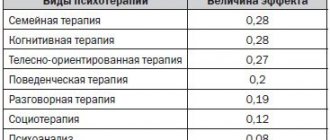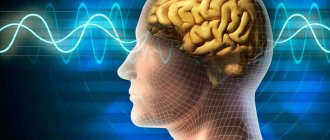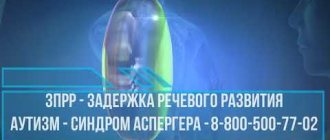The Salvation Clinic treats psychotic disorders using innovative techniques and classical approaches, offers effective strategies for the prevention of mental illnesses, including schizophrenia, proper care to reduce the suffering of patients, and social support. We have a specialized hospital, good technical and personnel potential. We provide assistance with hospitalization.
Symptoms of psychotic disorder
Symptoms are varied, individual in nature, and may change over time. Main signs: delusions and hallucinations. The latter represent extraordinary sensory sensations that are incomparable with reality. For example:
- vision of images, paintings;
- hearing voices;
- sensation of touch;
- sensation of smells, tastes.
Hallucinations can be tactile, auditory, olfactory, visual, or somatic. An image appears in thinking without an external stimulus. A person can be in a world of dreams and unfulfilled fantasies. A deceptive perception of reality can be observed when:
- severe fatigue;
- taking psychoactive substances;
- neurological diseases;
- schizophrenia.
This mental disorder is also characterized by delusional ideas. A person insists on his point of view, despite the fact that there is clear evidence and logical explanations for his wrongness. The patient may feel as if someone is constantly following him. These could be the intelligence services of various states, as well as mythical creatures and aliens. In other cases, the patient feels that his husband/wife is constantly cheating on him. Some patients may experience delusions of grandeur. They are simply convinced that they are able to perform various miracles, that they are prophets. Others consider themselves descendants of a noble family. Delusion can also manifest itself in relation to one’s sexuality. It seems to the patient that all strangers fall in love with him at first sight. Unrealistic ideas may appear due to:
- infection with an incurable disease;
- the imminent end of the world;
- creation of a perpetual motion machine;
- carrying out ridiculous social reforms;
- parasite infestation.
You should also consult a doctor if you notice the following symptoms:
- slurred speech;
- illogical thinking;
- inappropriate behavior;
- indifference to appearance;
- excessive irritability;
- tendency to harm one's health;
- lack of plans for the future;
- inhibition of actions and thoughts;
- apathy towards everything that happens;
- depressive moods.
Relatives can call a doctor to your home. Don't wait for the situation to get worse. It is possible to change the life of a loved one for the better. Don't be afraid to tell a specialist about your problem. We are ready to listen right now, provide confidentiality, and provide effective assistance.
Reasons for visiting a psychiatrist
- The first and “most understandable” reason is all kinds of stress, difficult life situations. This is exactly how ending up in a psychiatric hospital or just visiting a psychiatrist is usually portrayed in films and literature. Also popular are media statements that “in our time” there is more and more stress and the number of mental disorders is growing. In fact, the role of stress in the occurrence of mental disorders is very modest. Stress actually leads to the development of neuroses - diseases associated with excessive anxiety can cause depressive disorders, but almost never lead to the development of serious mental pathology. The most common mental disorders - schizophrenia, bipolar disorder - are not associated with stress!
- The second, and also relatively “understandable” reason, is the action of factors that directly damage the brain. Such diseases are usually called “organic”. External factors are alcohol, drugs, trauma, brain tumors. Epilepsy belongs to the same group of disorders. All these external factors lead to certain changes in the psyche - decreased memory, intelligence, emotional disorders, but extremely rarely lead to the development of psychoses - severe mental disorders accompanied by delusions and hallucinations. Delusions and hallucinations can occur when taking drugs, but usually do not last long.
- The third, and “little understood” reason is an imbalance of neurotransmitters in the brain. Such diseases are called “endogenous”, which in Greek means “internal”. This reason is “little understood” because the imbalance of neurotransmitters occurs as if “suddenly,” “out of the blue,” without connection with stress or any external factors. And yet, these are the most common mental disorders. It is endogenous disorders that include the most common mental disorders - schizophrenia, bipolar disorder, and related diseases.
The meaning of diagnosis
Thus, the meaning of diagnosis in psychiatry, first of all, is to determine which of the three reasons brought the patient to the appointment. Based on the above, it becomes clear what is of paramount importance for making a psychiatric diagnosis:
- The connection between the appearance of symptoms and any external factors - stress, head injuries, drug use.
- The symptoms themselves. Severe mental disorders - delusions, hallucinations - are almost always a sign of endogenous disorders.
What is the place of “objective” research - analysis, instrumental research in psychiatry?
Psychotic levels of disorder
There are a large number of mental disorders that are reflected differently in the behavior and thinking of the patient. Common features of the disorders: inappropriate behavior, inability to socialize. The most common mental illnesses are: depression, schizophrenia, dementia, mental retardation, autism, anxiety, obsessive-compulsive disorder, and phobias.
Acute psychotic disorder
In this situation, the patient's condition deteriorates very quickly. Signs of nervous system imbalance appear within 3-14 days. Symptoms: strong euphoria or, on the contrary, detachment from the outside world, delusional ideas, various hallucinations. Symptoms are constantly changing. It is assumed that the causative factors of the disease are severe stress:
- loss of loved ones;
- car accident;
- loss of a favorite job;
- traumatic brain injuries;
- mental and physical violence;
- postpartum depression.
Drug use and excessive alcohol consumption can also trigger the disorder. Symptoms can be eliminated within a few weeks with drug therapy. They use drugs that stimulate brain activity and increase stress resistance: vitamins, neurometabolic stimulants, drugs that promote the restoration of liver cells, new generation neuroleptics. However, it is important to attend a consultation with a psychotherapist so that central nervous system failure does not lead to the development of schizophrenia. The dosage of medications is reduced gradually. In the acute phase, the support of loved ones is important. A psychologist can also work with them. This is the only way to eliminate the risk of relapse.
Polymorphic psychotic disorder
Characterized by rapid development (hallucinations, delusions, depression, euphoria appear within 14 days). Symptoms change and are quickly relieved with the help of special medications. The exact causes of mental disorder are unknown. It has been reliably established that the onset of the disease is preceded by severe stress. Acute polymorphic psychotic disorders are confirmed in 0.4-0.6% of cases. If symptoms do not disappear within several months, the patient is given a different diagnosis.
Organic psychotic disorder
Deviations arise as a result of disturbances in brain structures. This could be a traumatic brain injury, circulatory disorders, infection, autoimmune disease, oxygen starvation of brain cells.
Psychotic affective disorders
The appearance of depressive moods is characteristic. A person loses the ability to enjoy life, withdraws into himself, and shows indifference to everything that happens around him. Other manifestations of depression:
- low self-esteem;
- pessimistic perception of reality;
- impaired concentration;
- disturbance of sleep and wakefulness;
- refusal to eat;
- suicidal tendencies;
- inappropriate feeling of guilt.
Transient psychotic disorder
In severe cases of the disease, inhibition of action and thinking and loss of mood are observed. Depression in psychotic affective disorder can be replaced by a joyful mood, excessive physical activity, increased activity, and overexcitement.
How does the disease manifest itself?
The human psyche is the mechanism that connects him with reality. She perceives, analyzes everything that happens around her and gives an appropriate reaction to it.
The psyche stores a lot of clearly structured information that can be used at the right time. But when for a number of reasons its systemic activity is disrupted, it gives a person many “surprises”.
Acute psychosis is represented by a wide range of manifestations, which are divided into negative and productive.
Productive symptoms consist in the addition of atypical manifestations to the patient’s behavior. This group is very extensive and includes the following characteristics.
Motor disorders . In acute psychotic disorder, the person may be in a state of hyperarousal. At the same time, he moves quickly, loudly and talks a lot. His speeches are incoherent, rash actions are possible. Or the patient, on the contrary, is in a state of deep lethargy or stupor. He sits in one position, with a detached gaze, looking at one point. Doesn't respond to questions, silently refuses to eat.
Mood . Polar, pronounced changes in mood are observed. A psychotic person is either in a depressed state, with reduced emotional reactions, with a pessimistic attitude, melancholy and apathy, suicidal thoughts, or is subject to a pathologically elevated mood, with accelerated thinking, and unrealistic plans.
Delusions and hallucinations are an integral part of psychosis.
These two symptoms express events, judgments and sensations that do not exist in reality. Hallucinations .
They are divided into types depending on their sense organs. But the most common “psychotic” hallucinations are auditory. They can be simple and complex. Simple “decoys” are individual sounds that the patient senses: a telephone ringing, the buzzing of a mosquito, the barking of a dog. Complex hallucinations appear in the form of a dialogue or monologue of non-existent people in the head of a psychotic. They comment on his actions and order him to perform this or that action. Such unrealistic thoughts are very dangerous both for the patient himself and for those around him: it happens that voices persuade him to commit unlawful and dangerous acts.
Tactile pseudo-sensations are less common.
A 50-year-old man, a furrier, described his hallucinations as a result of alcohol abuse. He said that they did not give him a pass, constantly commenting on his activities: “He sews skins, but his hands are shaking, it doesn’t work out well,” “Go get some vodka,” “Well done, he stole a good skin.”
Brad . Ideas and thoughts that do not correspond to reality are something undeniable for a patient with psychosis. It is impossible to dissuade him of their unreality and illogicality. They are very diverse, appearing in various variations:
- delusions of self-blame, when people think they have done something sinful or terrible;
- hypochondriacal thoughts about the presence of an incurable serious illness. The patient says that his organs are rapidly being destroyed, decomposing, and even a stench emanates from him. Demands to perform an operation on him;
- ideas of persecution. The man says that he is being watched and hunted;
- impact ideas. He is under the control of higher powers, aliens, sorcerers;
- delusions of grandeur, when a psychotic considers himself an unsurpassed inventor, omnipotent, practically God;
- and a lot of other nonsense about jealousy, love, ideas of changing the world, etc.
Negative symptoms are characterized by the loss from the patient’s behavior of those traits and actions that were previously inherent in him. The person seems to be transformed into a new personality. This is partly facilitated by hallucinatory sensations and delusional ideas.
In a state of acute psychosis, the following changes can be observed in a person:
- emotional impoverishment, lack of desires and aspirations;
- isolation, avoidance of communication, breaking off most contacts;
- becomes unfriendly, tactless, loses moral character;
- aggressive, rude;
- gross disturbances of thinking - lack of logic, clarity, focus, narrowness, limited reasoning.
The person becomes disoriented. The connection between thoughts and actions is lost. The patient loses the opportunity to work and exist normally in society.
Acute psychosis is a disorder that can be episodic or recurrent. There are quite a lot of its forms, of which the most frequently recorded ones are distinguished.
Reactive psychosis
The disorder develops in response to a strong stressor that may threaten the patient’s safety or is of particular significance to him. This includes events such as accidents and catastrophes, loss of social status, and death of loved ones. Reactive psychosis is reversible, but depends on the duration and degree of the pathological situation.
Typically, this condition lasts from several hours to several days. It manifests itself in two variants: affectogenic stupor or strong excitement.
Affectogenic stupor is numbness, inability to move and talk. Excitement is characterized by aimless thrashing, uncontrollable sobbing, and a desire to run away somewhere or hide.
Symptoms go away after exposure to the traumatic factor. If the situation is not resolved, then the acute phase turns into a protracted one.
Alcohol psychosis
This is a common form of acute psychotic disorder caused by prolonged and regular use of alcohol. Ethyl alcohol is the basis of alcoholic beverages and has a neurotoxic effect. Over time, its concentration in brain cells becomes much higher than in the blood.
Alcoholic psychosis has several forms of manifestations that make themselves felt in the withdrawal stage or during the intake of alcoholic beverages. According to the course, acute and chronic stages are distinguished.
Alcoholic delirium or delirium tremens is perhaps the most common type of acute psychosis associated with alcohol abuse. It occurs during withdrawal symptoms in the first 3 days. Before this, alcohol consumption must last for at least 10 days.
This condition is manifested by physiological and psychological symptoms. Characteristic:
- chills, fever up to 39–40°;
- sweating, tachycardia;
- tremor of the limbs.
Psychotic symptoms include:
- partial or complete disorientation in space;
- mood swings;
- hallucinations;
- delirium of persecution.
The duration of “delirium tremens” ranges from 3 days to a week.
This is how the person who suffered it describes the attack. After another binge with a friend in the village, he returned home by train. A young couple sat opposite him and whispered about something. It seemed to the man that they were preparing a conspiracy against him.
Arriving at the station, waiting for his train to transfer, he was seized by panic. It seemed to him that everyone around him was against him and wanted to harm him. He left the room onto the street, but immediately felt that the entire crowd was rushing after him so that he would not run away. And suddenly the man realized that these people wanted to kill him.
He began to run, not knowing where. The most interesting thing is that he heard the pitter-patter of feet behind him. He ran into the entrance of the first house he came across, hearing voices behind him. They repeated: “Here, I see him,” “He’s here,” “Hurry for him.” I started calling all the apartments. In one of them, a man opened the door and let in a would-be traveler.
He began to say that they were pursuing him and wanted to kill him. To which the man called the police, and the alcoholic was taken to a psychiatric hospital. Having arrived at his destination, thoughts of a conspiracy began to overcome him. The last straw was when the man grabbed a stool and hit the orderly on the head with it.
Another form of acute alcoholic psychotic disorder is alcoholic hallucinosis. It also manifests itself in a state of withdrawal. Against the background of restless sleep, the patient begins to see unclear sounds and noises. Then they become more pronounced. At first they remain neutral, but later they condemn and threaten the person. In addition to auditory ones, visual and tactile pseudo-sensations appear.
Under the influence of hallucinations, a person’s behavior changes. He becomes irritable, suspicious, afraid and tries to hide or shows aggression. This condition can persist for up to several weeks.
Postpartum psychotic disorder
Primiparas are more susceptible to this form of the disease than multiparous women. It can be contributed to by difficult, painful childbirth, hormonal imbalances, a history of mental disorders, and abuse of psychotic drugs.
The first signs of the disorder can be noticed already on the 2nd day after birth. It develops according to 2 scenarios.
In the first case, the woman is in high spirits. She is overly talkative, fussy, and makes far-reaching plans. Shows intense, pathological care for his child, as well as for other children.
In the second case, the opposite is true. The woman becomes irritable and whiny. She is overcome by a constant feeling of fatigue and anxiety, and suffers from insomnia. She does not show any interest in the child, does not pay attention to him at all, or, on the contrary, is constantly near him and does not let anyone near him. She has no appetite. Subsequently, disorientation in space sets in, consciousness is darkened, and there is no criticism of one’s condition.
The appearance of hallucinations makes the situation even worse. Against this background, excitement develops and the behavior of the young mother is inappropriate. She's constant
but something seems to be happening. She may express thoughts that this is not her child, that he is seriously ill or even dead. The young mother is sure that someone wants to harm, steal, or kill the baby. Such ideas are classified as delusional.
Delusions, hallucinations, and impaired perception of reality become important criteria in distinguishing between postpartum depression and psychosis.
As a rule, recognizing the disease in the early stages is very difficult. Its first signs are regarded as banal fatigue and overwork. Plus, the woman’s thinking becomes uncritical, she cannot correctly assess the situation. In this case, great hope and responsibility falls on relatives. By detecting the symptoms of the disease in time and starting its treatment as early as possible, it will be possible to avoid serious consequences.
Being in a psychotic state, a woman puts her life and the life of her child at risk. The tendency to suicide is quite high. In addition, a young mother is capable of harming a child by feeling hatred towards him or trying, in her understanding, to cure him of a serious illness or protect him from a danger invented by her.
If a woman is overtaken by a similar illness, then the main thing to do is to isolate her from the child. This will have a positive impact on both her health and the well-being of the baby. Breastfeeding is prohibited, as it can aggravate the condition.
Mass psychosis
This disorder affects a large group of people and is based primarily on suggestibility . Such a group most often means a crowd as an unorganized, emotional gathering of people based on common interests.
The most famous cases of such psychosis are mass burnings, suicides, frantic dancing, hiccups, worship of the leader, and demonic possession.
A large role in the emergence of a mental epidemic is given to the blackout of consciousness and the predominance of the herd instinct. Stress and aggression increase the predisposition to suggestion and submission. And the main mechanism for the development of the disorder is induction, the prevalence of delusions between group members. Etc
and this critical thinking is completely turned off, and a person can believe in anything.
The concept of mass psychosis includes group actions that contradict established norms in society.
A striking example of a mental epidemic is the tragedy that occurred with members of the Peoples Temple sect in 1978. They committed mass suicide: 911 people drank cyanide.
There are still quite a few types of acute psychosis, each with its own background:
- senile psychosis, the cause of which is senile dementia;
- traumatic psychosis, cause - post-comatose state, head injuries;
- endogenous psychosis, cause – other mental illnesses;
- postoperative psychosis;
- infectious psychosis and others.
Acute polymorphic psychotic disorder with symptoms of schizophrenia
Psychotic and affective symptoms are stable. There are no sudden changes in behavior or mood. The onset of the disease is within two weeks after the occurrence of the provoking factor. Symptoms are typical for schizophrenia:
- depressive moods;
- echo of thoughts;
- expression of inappropriate emotions;
- various kinds of hallucinations;
- persecution mania.
To diagnose this disorder, it is important to conduct a thorough examination of the patient. It is necessary to exclude the fact of schizophrenia, schizoaffective psychosis or bipolar disorder, the presence of traumatic brain injuries, the influence of toxic, psychoactive substances on the body. The following diagnostic methods are mandatory:
- general blood analysis;
- electroencephalography;
- interviewing the patient;
- survey of relatives;
- Neurotest;
- Neurophysiological test system.










